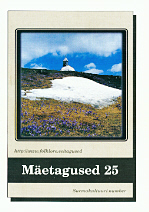Risti peale kirjutas: Ühel papil oli peni... Eesti loomakalmistukultuurist
Risti peale kirjutas: Ühel papil oli peni... On the Estonian Pet Cemetery Tradition
Author(s): Marju Torp-KõivupuuSubject(s): Customs / Folklore
Published by: Eesti Kirjandusmuuseum
Summary/Abstract: While in Finland pet cemeteries were common phenomena already in the 1990s, the first pet cemetery in Estonia was established only in 1995. The article discusses a rather marginal aspect of death culture - the funeral traditions and cemetery culture of pets in the late 20th and early 21st century Estonian society. Native Estonians, who came from the village society, had mostly practical relationships with their domestic animals, whereas local Balto-German estate owners are known to have buried their expensive pedigree dogs and horses. Urbanised people have estranged from the natural environment, and try to fill the void with caring for pets. In our Postmodernist and technocratic world the relationships with pets are often of anthropomorphic nature - animals are often attributed human characteristics. The first animal cemeteries in the western society were established in the late 20th century. The first charity pet cemetery in Estonia, used mostly for burying cats and dogs, but also various smaller pets, was founded in 1995. The graves of pets are often decorated with crosses and gravestones. And though the semantics of the cross sign has lost its sacral Christian meaning for modern people, and has become to symbolise mourning, the Christians consider the use of the cross symbol in pet cemetery culture as inappropriate. The burial tradition of pets appears to depend on the ethnic and religious affinity of their owners and largely copies the traditional funeral tradition of the corresponding ethnic group. Various popular beliefs are associated with buried pets, for instance, excessive dedication to a pet may inhibit its owner's chance of having children. While the Estonian society has largely accepted the practical need for pet cemeteries in urbanised environment, the pet burial traditions are still considered as something alien, perhaps because of their lavishness. The burial traditions and customs largely copy the human funeral traditions. Pet owners also use figurative and euphemistic expressions to talk about the death of their animals. When a person dies, obituaries are published in daily newspapers. Similar obituaries and condolences are published in specialised magazines for animal owners. Comparing the Estonian pet cemetery culture with that of the Finnish, several similarities but also some differences in tradition and customs can be noticed.
Journal: Mäetagused. Hüperajakiri
- Issue Year: 2004
- Issue No: 25
- Page Range: 47-76
- Page Count: 30
- Language: Estonian

